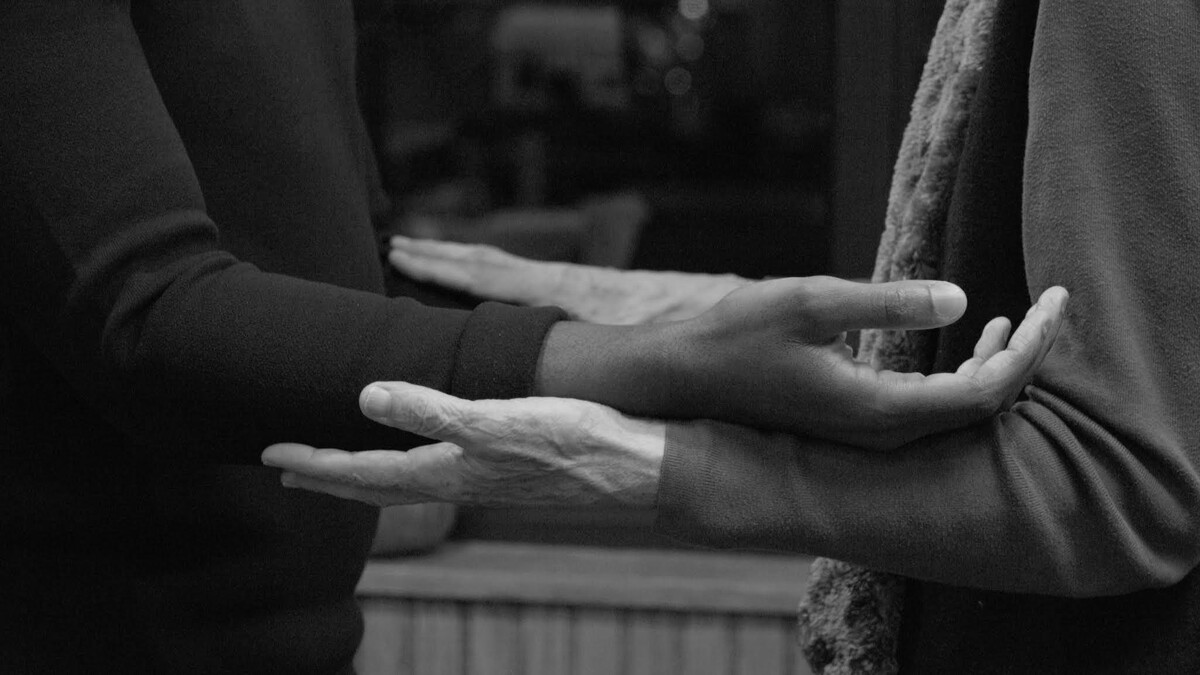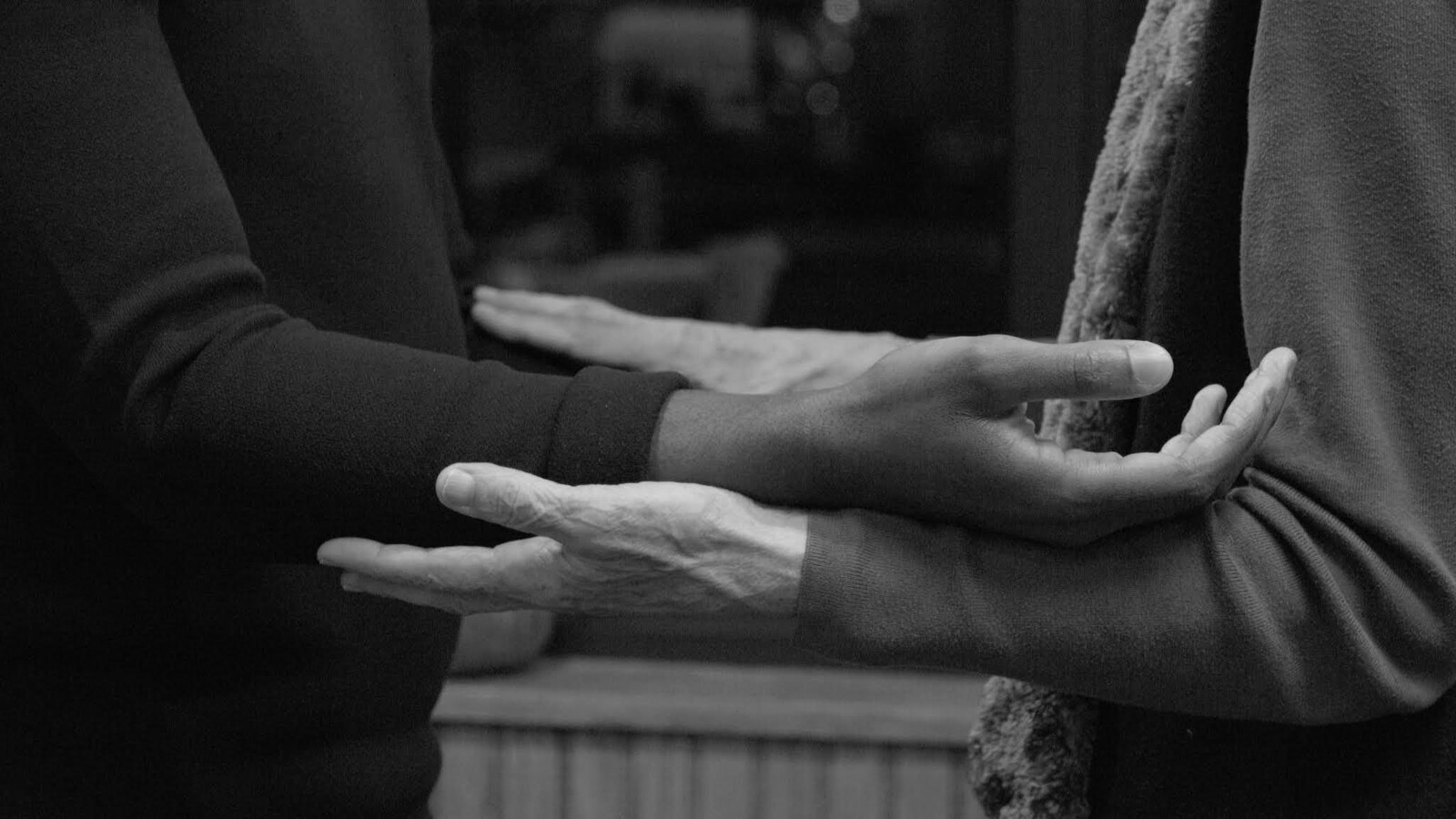Adam Pendleton’s Just Back From Los Angeles: A Portrait of Yvonne Rainer is the third in a series of video portraits, following My Education: A Portrait of David Hilliard, the former chief of staff for the Black Panthers, and Lorraine O’Grady: A Portrait. The text below represents a transcription of the script Pendleton prepared for Rainer to read during their day spent filming at the Ridgeway Diner in Chelsea. The text mixes citations from Stokely Carmichael, Malcom X, Keeanga-Yamahtta Taylor, and excerpts from Rainer’s own published works; the film ends with the gospel song “I Am Saved” by the Silver Harpes over the footage of Rainer’s now canonical movement work Trio A. Whether read or viewed, Just Back from Los Angeles is an uncanny work, one that deploys the double meaning of the word “movement”—now choreography, now social uprising—to reveal a shared method of freedom coursing beneath traditions typically received separately.
—Editors
They’re beginning to see what they used to only look at … 1
I remember the breathlessness of the lifting section
I remember your Martha Graham story and your voice rising, and I got worried you were going to talk about whether she ate cock or not and Steve starting to read on the other mic and changing the atmosphere.
I remember the opening bars of the Chambers Brothers and doing Trio A slow, very slow, and Steve joining me and then fast, with and against Steve’s tempo.
I remember… you grinning at the pleasure we had.
Oh, and the wings.
I remember watching the pillow solo and then during Trio A the wings would sometimes flap in my face.
I remember talking to you in the hotel, before “stoned,” and you said I was always wanting to get someplace and that I should just be where I was…
and only there… and that was what happened in the performance.
I remember standing around waiting to start the run-thru, and you were talking and then you turned and said, “What are you waiting for?”
and Doug saying what I had been doing, which was waiting for you!
I remember the pleasure of huddling in the rolls and Steve coming down on me with his self-conscious silly grin.
And I remember being out of it thru Becky’s solo, then toward the end seeing her so totally there with that changed and changing body of hers…
I remember the box improvisation with David.2
The specter of crisis was also bolstered by the cops’ simple inability to stop killing black people. Just prior to Brown’s murder, forty-six-year-old Eric Garner of State Island, New York, unarmed and minding his own business, was approached by police and then choked to death as he gasped eleven times, “I can’t breathe.”Two days after Brown was killed, Los Angeles Police department officers shot and killed another young black man, Ezell Ford. Months later, autopsy reports would confirm that Ford was shot multiple times, including once in the back, while he lay on the ground. In a suburb of Dayton, Ohio, police shot to death John Crawford the 3rd, twenty-two years old and African American, while he was talking on his cell phone and holding an air gun on sale in the aisle of a Walmart. And as the nation waited to hear whether a grand jury would indict officer Darren Wilson for Brown’s death, Cleveland police killed thirty-seven-year-old, African American Tanisha Anderson when they slammed her to the ground, remaining on top of her until her body went limp. The following week, police in Cleveland struck again, murdering a twelve year old boy, Tamir Rice, less than two seconds after arriving at the playground where Rice was playing alone. Making maters worse, the two Cleveland police stood by idly, refusing aid, while Tamir bled to death. When his fourteen-year-old sister attempted to help him, police wrestled her to the ground. 3
I remember the breathlessness of the lifting section
I remember the opening bars of the Chambers Brothers
I remember… you grinning at the pleasure we had.
I remember watching the pillow solo and then during Trio A the wings would sometimes flap in my face.
I remember talking to you in the hotel, before “stoned,”
I remember standing around waiting to start the run-thru, and you were talking and then you turned and said, “What are you waiting for?”
I remember the pleasure of huddling in the rolls and Steve coming down on me with his self-conscious silly grin.
I remember the box improvisation with David. 4
Whenever one writes about a problem in the United States, especially concerning the racial atmosphere, the problem written about is usually black people, that they are either extremist, irresponsible, or ideologically naïve.
What we want to do here is to talk about white society, and the liberal segment of white society, because we want to prove the pitfalls of liberalism, that is, the pitfalls of liberals in their political thinking.
Whenever articles are written, whenever political speeches are given, or whenever analyses are made about a situation, it is assumed that certain people of one group, either the left or the right, the rich or the poor, the whites or the blacks are causing polarization.
The fact is that conditions cause polarization, and that certain people can act as catalysts to speed up the polarization; for example, Rap Brown or Huey Newton can be a catalyst speeding up the polarization of blacks against whites in the Untied States, but the conditions are already there. George Wallace can speed up the polarization of whites against blacks in America, but again, the conditions are already there.
Many people want to know why, out of the entire white segment of society, we want to criticize the liberals. We have to criticize them because they represent the liaison between both groups, between the oppressed and the oppressor. The liberal tries to become an arbitrator, but he is incapable of solving the problems. He promises the oppressor that he can keep the oppressed under control; that he will stop them from becoming illegal (in this case illegal means violent). At the same time, he promises the oppressed that he will be able to alleviate their suffering—in due time. Historically, of course, we know this is impossible, and our era will not escape history. 5
A line is the distance between.
They circled the seafood restaurant singing “We shall not be moved.” 6
See Malcom X’s speech The Ballot or the Bullet (1964) →
Barbara Dilley letter to Yvonne Rainer reflecting on Robert Morris’s piece Continuous Project Altered Daily (1969) in Feelings Are Facts (Cambridge: MIT Press, 2006).
Keeanga-Yamahtta Taylor, #Black Lives Matter to Black Liberation (Chicago: Haymarket Books, 2016).
Barbara Dilley letter to Yvonne Rainer reflecting on Robert Morris’s piece Continuous Project Altered Daily (1969) in Feelings Are Facts (Cambridge: MIT Press, 2006).
The Pitfalls of Liberalism, by Stokley Carmichael in the Black Dada Reader
See Ron Silliman’s poem ”Albany” in ABC (Tuumba Press, 1983) →





